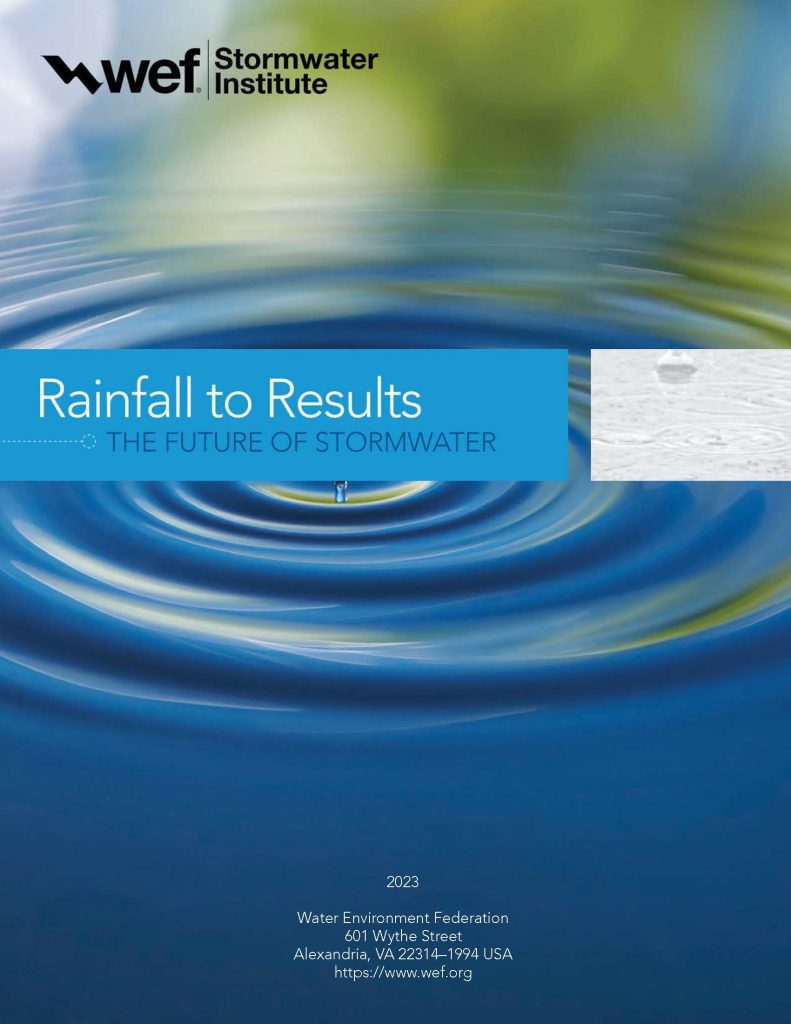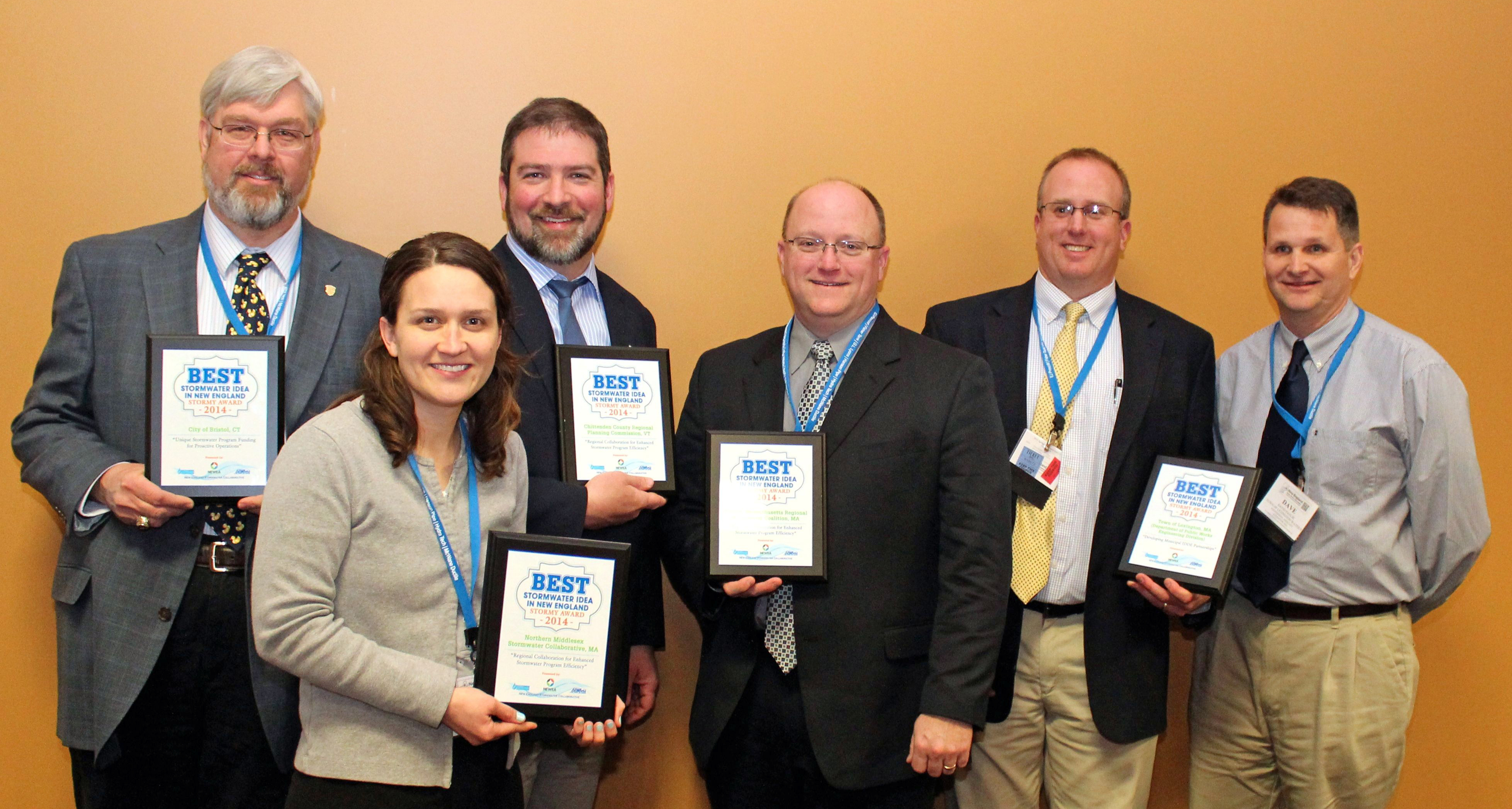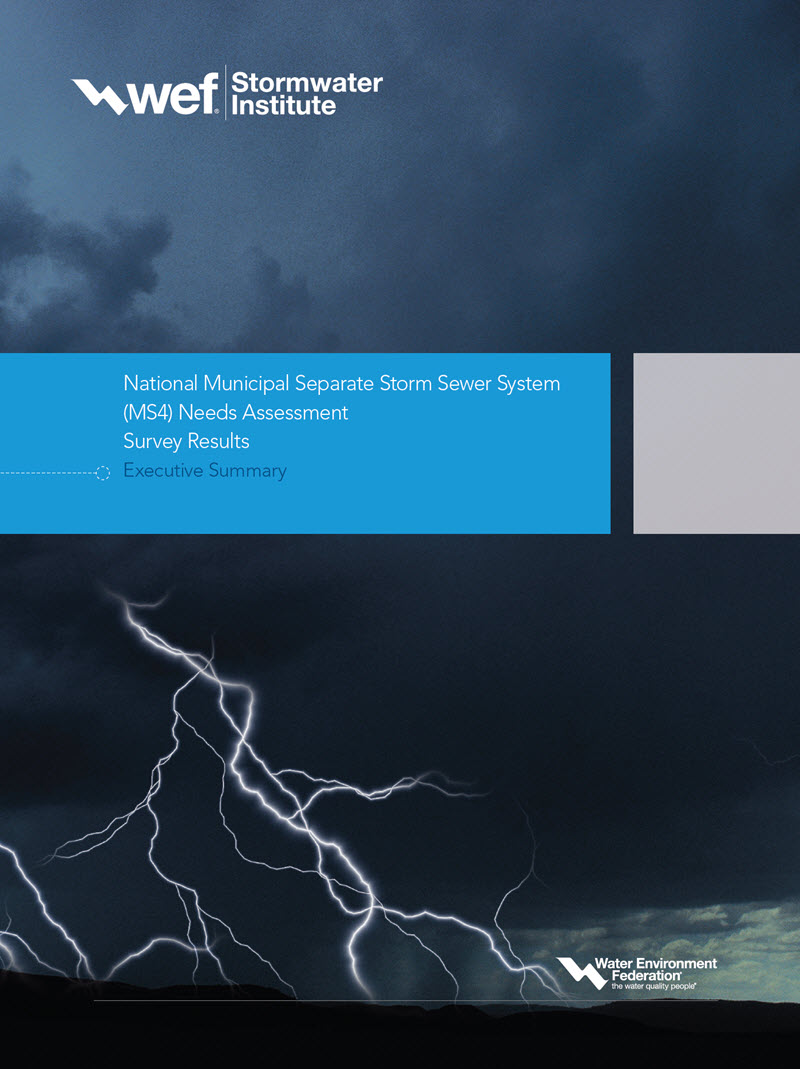The Water Environment Federation (WEF; Alexandria, Virginia) recently released a new report, 2023 Rainfall to Results: The Future of Stormwater. The 68-page document outlines a unified vision for the U.S. stormwater management sector and identifies emerging opportunities to make stormwater systems more effective, efficient, and sustainable.

Just like precipitation itself, the nature of the stormwater management sector is decentralized. Runoff-control infrastructure must cover entire watersheds to maximize its effectiveness, often crossing jurisdictional boundaries. This creates questions regarding who assumes responsibility for stormwater infrastructure construction and upkeep. Further, the ever-growing collection of designs and approaches for stormwater management complicates efforts to develop best practices for operations and maintenance, often forcing communities to make important stormwater management decisions based on incomplete information. For these reasons and more, devising a nationwide strategy to guide and expedite the growth of the U.S. stormwater sector has proven challenging.
In 2015, the release of the inaugural Rainfall to Results report marked the launch of the WEF Stormwater Institute. Like the 2015 report, the 2023 update was authored and reviewed by an interdisciplinary group of sector-leading stormwater professionals and will guide WEF’s ongoing efforts to identify common challenges, enhance information-sharing, and develop new resources to assist U.S. stormwater organizations of all sizes and contexts.
Seven ‘Vision Areas’ for Sustainable Stormwater Management
Rainfall to Results re-visits six vision areas of the stormwater profession that represent the sector’s most pressing challenges or highest-potential opportunities for improvement and adds a seventh area to consider climate change. These vision areas cover the gamut of developments in the stormwater sector from the spread of digital twins, artificial intelligence, and other cutting-edge technologies to promoting interjurisdictional and interdisciplinary cooperation on stormwater management, establishing a set of sector-wide, universally relevant priorities to guide future action.
The visions areas are
- Work at the Watershed Scale,
- Transform Stormwater Governance,
- Support Innovation and Best Practices,
- Manage and Maintain Stormwater Assets,
- Continue to Close the Funding Gap,
- Engage the Community, and
- Plan for Stormwater Resilience.
The report explores each of these vision areas in detail. Each section begins with a forward-looking vision statement that describes ideal future conditions for that aspect of the U.S. stormwater sector. This is followed by a set of three to six specific action items targeted toward researchers, practitioners, regulators, and legislators that will help move the needle toward these ideal futures. Action items are reinforced with case studies from around the U.S. and beyond, highlighting exemplary work underway by stormwater organizations of all sizes and scopes.
New Challenges, New Opportunities
New to the 2023 Rainfall to Results report is a seventh vision area addressing the need for stormwater organizations to better incorporate climate change resilience into their practices.
Report authors describe that stormwater managers must develop proactive, future-facing resilience plans that incorporate the latest authoritative climate change projections. These plans should assess how changing precipitation trends are expected to affect existing stormwater infrastructure as well as incorporate emerging monitoring technology — such as advanced sensors, warning networks, and hydraulic modeling programs — to accurately gauge these effects.
According to the report, many different stakeholders can play a role in this work. State and federal governments as well as equipment manufacturers can help make these technologies more accessible, and the research community can support efforts to standardize and consolidate climate change projections into more actionable data for stormwater managers, the report details.
The 2023 report outlines new opportunities to improve the U.S. stormwater sector and identifies emerging challenges. Report authors draw a parallel between the rise of green infrastructure 8 years ago and the dawn of “smart” stormwater infrastructure today. In 2015, green infrastructure was considered an unexplored frontier for the U.S. stormwater sector. That same momentum is now building behind high-tech measures with automated controls and sensing capabilities, able to optimize infrastructure operations and improve long-term resilience.
Likewise, the report describes a shift to valuing runoff as an underutilized resource, ripe for reuse opportunities with proper treatment capabilities. This is in contrast to its past reputation as something that required diversion and disposal. The largest-ever federal investment in U.S. stormwater programs is expected to create new flexibility to help stormwater professionals seize these new trends, authors describe.
Read the full 2023 Rainfall to Results: The Future of Stormwater report via WEF’s Access Water platform.
Top image courtesy of PublicDomainPictures/Pixabay

ABOUT THE AUTHOR
Justin Jacques is editor of Stormwater Report and a staff member of the Water Environment Federation (WEF). In addition to writing for WEF’s online publications, he also contributes to Water Environment & Technology magazine. Contact him at jjacques@wef.org.






